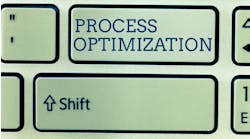How manufacturers can cut complexity with integration technology
In today’s manufacturing world, staying competitive means adopting “smart” technology strategies. However, one key challenge remains common: Manufacturers need access to all past, present, and future data to innovate and grow. For example, according to Intoware, 74% of manufacturers claim to be held back by disconnected data.
The solution to this pain point looks easy—seamless flow of data across applications and data stores—on-demand, centrally, and securely available to everyone in the organization whether in the cloud or on-premises. However, integration platforms, especially cloud-focused Integration Platform-as-a-Service (iPaaS) solutions, are not created equally.
A poorly implemented integration platform, or one with inadequate capabilities, often can increase complexity, require a steep learning curve, and leave out crucial sources of data. Organizations are then left with a price tag that is hard to swallow, and they still haven’t solved their integration problems.
The best integration deployments provide a unified approach that can seamlessly connect diverse systems and applications across multi-cloud and disparate on-premises environments to enable organizations to thrive. For manufacturers looking to ensure they’ve got the best-in-class capabilities, start by looking at how their integration solutions provide benefits for vital components of the platform, such as supply chain management, customer experience, and streamlining IT efficiency.
Supercharging the supply chain
Efficiency in the supply chain is a top priority for manufacturers on the integration front that requires a unified network—connecting suppliers, distributors, and your production team with centralized visibility. Decision-makers will need a single pane of glass that enables administering and monitoring of integrations and APIs deployed across hybrid and multi-cloud infrastructures.
What’s the benefit? Real-time visibility into inventory levels, production status and delivery schedules. Automation kicks in, speeding up information flow and simplifying complex supply chain operations. This level of integration optimizes your production lines, enhances demand forecasts, and reduces waste.
Plus, end-to-end visibility means you get a holistic view of your manufacturing operations, from sourcing raw materials to delivering the final product. With these insights, you can identify bottlenecks, fine-tune workflows, and maintain quality control throughout production. This enhances internal operations and results in a more agile and responsive supply chain network.
Elevating customer experiences
As consumer digital expectations continue to soar, both B2B and B2C manufacturers are feeling the pressure to step up their game and deliver personalized digital experiences.
However, critical data on customer behavior, acquisition costs, CRM functionality, customer lifetime value, and recent interactions often reside in separate silos with different departments and across different environments (on-prem, hybrid, cloud, multi-cloud, etc.).
See also: AI adoption crawling among manufacturers, new report finds
This fragmented view of customer data hinders effective customer service interactions and fails to deliver real value to customers and vendors. Integrations can unlock substantial value by creating connected digital experiences and tailored product offerings that cater to B2B and B2C customers' unique needs.
Examples of ideal CX integrations include straightforward solutions like automating scheduling for service technicians or equipping customer service representatives with a comprehensive view of all customer activities. These seemingly small changes can substantially enhance customer loyalty and retention, all while providing all relevant customer information at your fingertips.
Streamlining IT to empower business users
Integration can also provide consistent solutions to a wide range of end-users, significantly enhancing operations on and off the manufacturing floor. Ensure that whatever solution gets deployed offers an intuitive visual interface that allows quick and easy adjustments without the heavy reliance on developers’ time.
The goal is to develop anywhere and deploy anywhere: build integrations with your preferred tooling (online or offline) and execute them across runtimes in any location (public cloud, private cloud, on-premises). This will free up the time of company IT and developer teams, who would have spent time setting up new or connecting old systems and their corresponding integration requirements.
See also: Making the business case for PLM to SaaS deployment
This means looking for solutions that can empower business users so more of your organization can improve operations. Low code allows citizen developers to create integrations effortlessly through drag-and-drop functionality, user-friendly toolkits, and pre-built templates. The most advanced solutions will also deploy generative AI to automate integrations using natural language, with no IT dependency or learning of any visual tool.
The result is a manufacturer that can leverage integration to connect data with customers, opening up new opportunities and innovative possibilities, such as upselling, cross-selling, exploring new revenue streams and tapping into new markets.
Full integration is a foundation for success
Faced with more and more challenging external factors, manufacturers need strategic technology assets that can help drive success in this environment. As more of a manufacturing operation moves to the cloud and embraces AI, effortless connectivity as well as free, secure, and constant data flow are characteristics of successful business.
See also: Q&A: Getting help: Why Seeq and other tech providers leverage so many partnerships
An integration platform is the strategic center of this new way of working, but ensuring it’s fit for purpose and can handle the complex demands of modern organizations is the only way to manage the chaotic and dynamic environment—ensuring agility, governance, and productivity.




